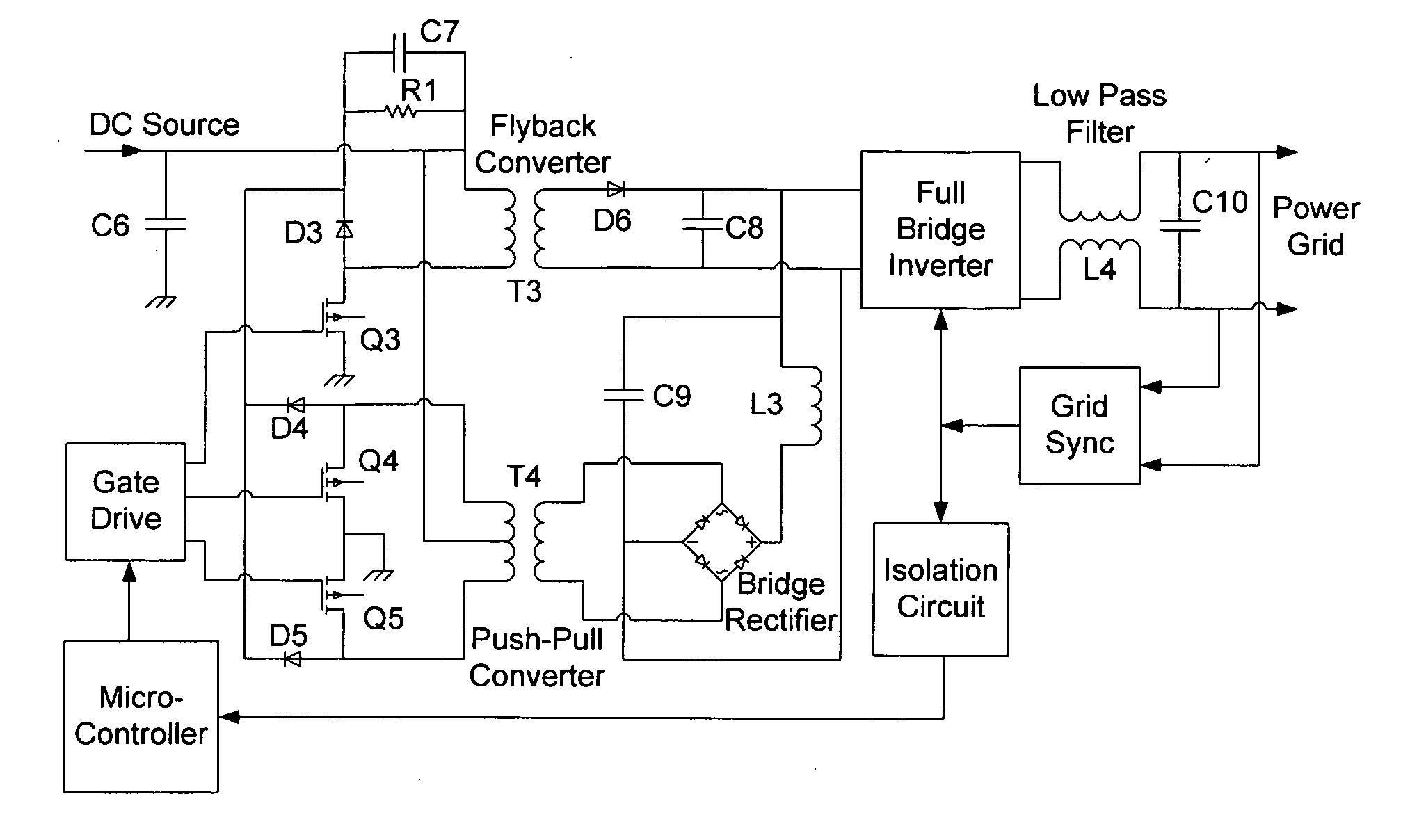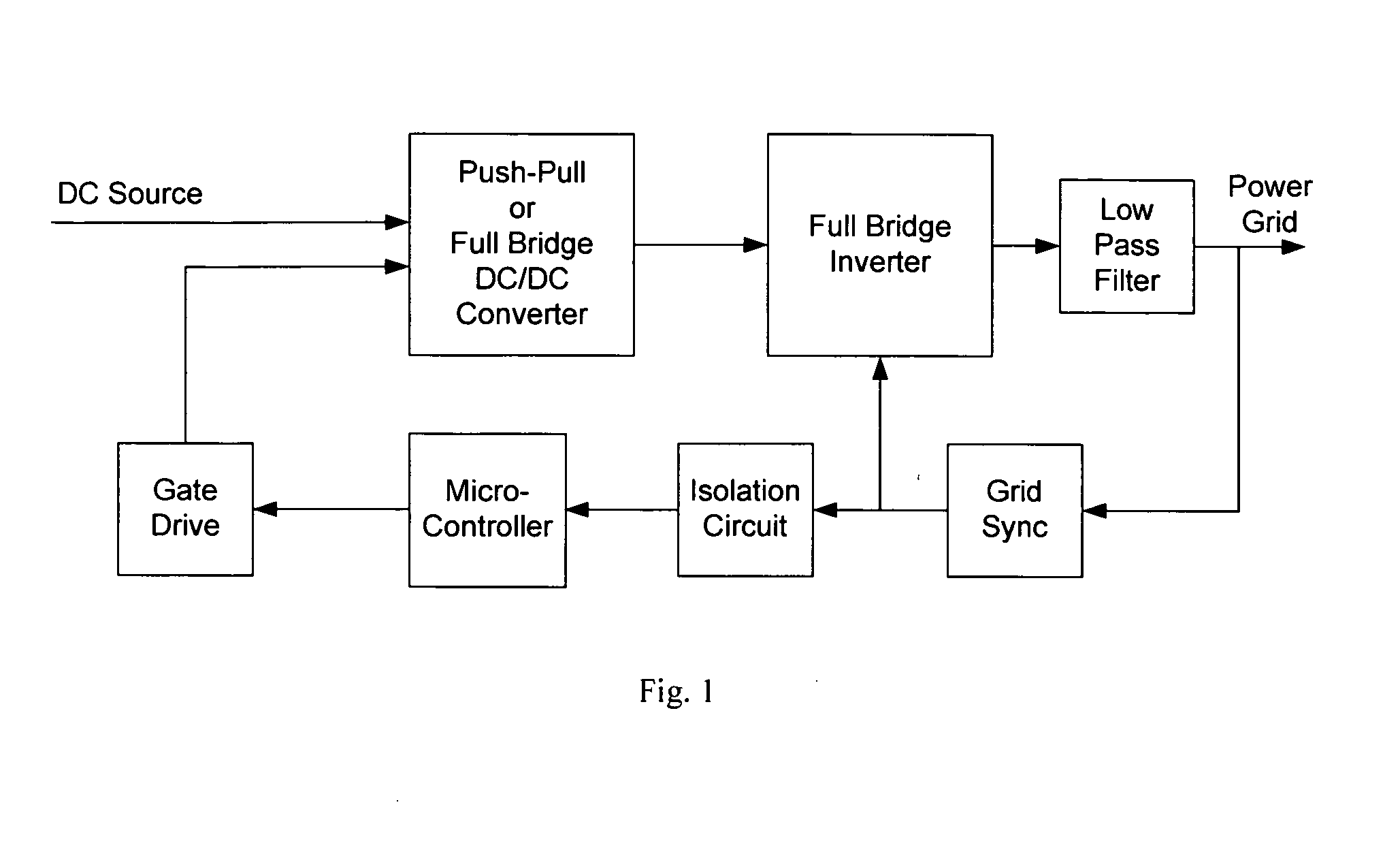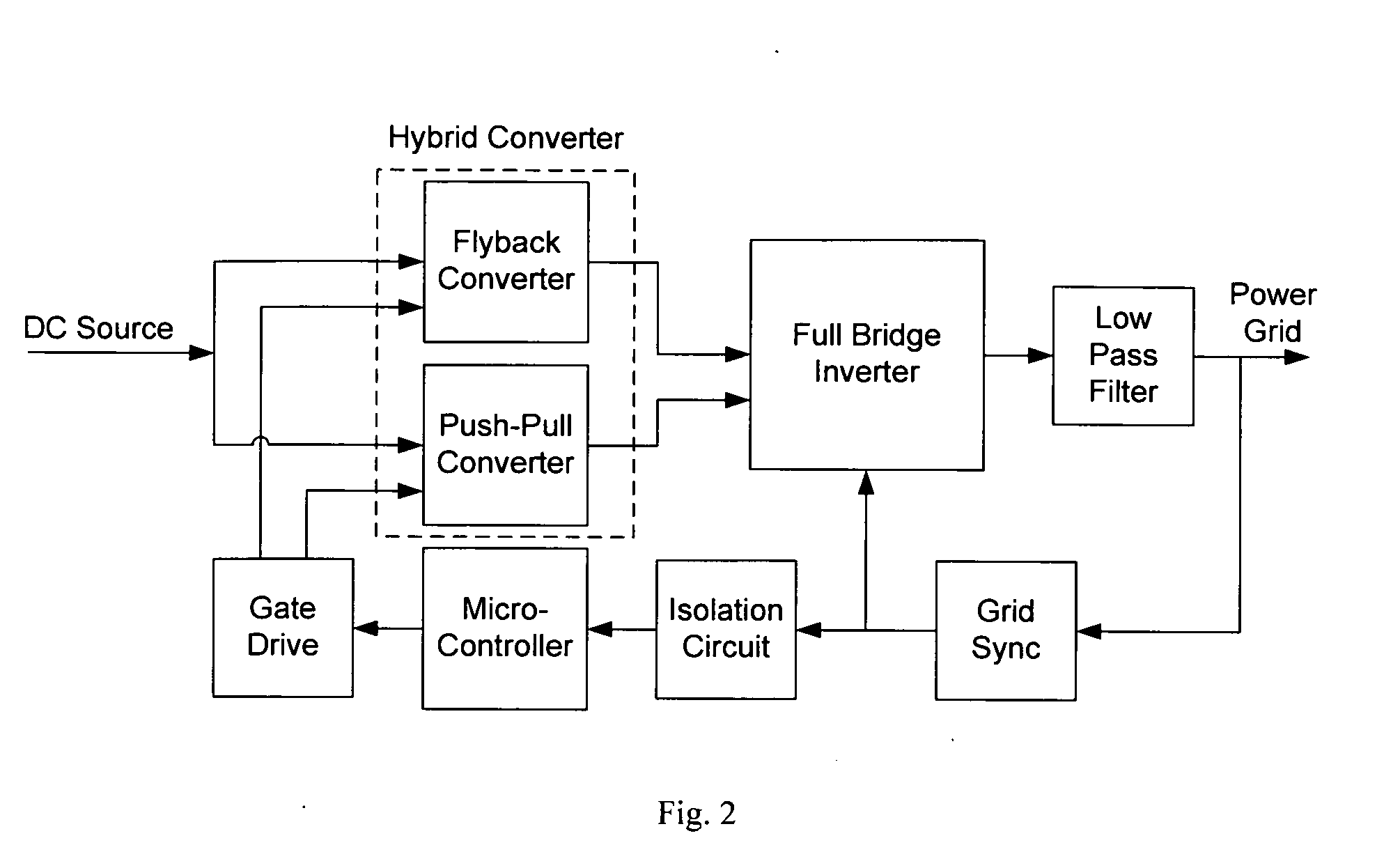High Efficiency Solar Wind Inverter With Hybrid DCDC Converter
a solar wind inverter and converter technology, applied in the direction of dc-ac conversion without reversal, process and machine control, instruments, etc., can solve the problems of inability to meet the requirements of traditional push-pull or full-bridge converters with fixed transformer turns ratios, inability to select the transformer's coil turns ratio in push-pull or full-bridge converter designs, and poor efficiency, so as to achieve the effect of reducing the input voltage range, reducing the cos
- Summary
- Abstract
- Description
- Claims
- Application Information
AI Technical Summary
Benefits of technology
Problems solved by technology
Method used
Image
Examples
Embodiment Construction
[0024]Circuit design implementations of a solar micro-inverter with the invention have been proposed in FIG. 3 and FIG. 4.
[0025]FIG. 3 demonstrates a circuit topology of the new hybrid converter micro-inverter design with the power outputs of the forward and flyback DC / DC converters are connected in series to a DC voltage bus.
[0026]FIG. 4 depicts a circuit topology of the new hybrid converter micro-inverter design with the power outputs of the forward and flyback DC / DC converters are connected in parallel to a DC voltage bus.
[0027]In these micro-inverter designs, the push-pull converter used a transformer with a turns ratio of 10 and a flyback transformer with a turns ratio of 3.5. Optimally, the passive clamping circuit can be replaced by an active clamping circuitry to re-circulate the energy in the push-pull and flyback converters when the power switching devices are turned off, in order to further increase the power conversion efficiency. The active clamping / energy recirculation...
PUM
 Login to View More
Login to View More Abstract
Description
Claims
Application Information
 Login to View More
Login to View More - R&D
- Intellectual Property
- Life Sciences
- Materials
- Tech Scout
- Unparalleled Data Quality
- Higher Quality Content
- 60% Fewer Hallucinations
Browse by: Latest US Patents, China's latest patents, Technical Efficacy Thesaurus, Application Domain, Technology Topic, Popular Technical Reports.
© 2025 PatSnap. All rights reserved.Legal|Privacy policy|Modern Slavery Act Transparency Statement|Sitemap|About US| Contact US: help@patsnap.com



